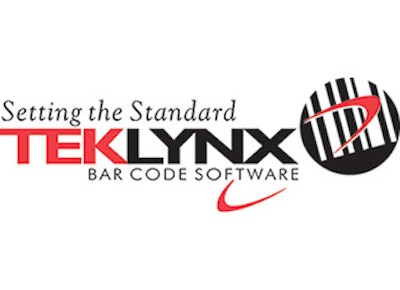
The Produce Traceability Initiative (PTI) is beginning to take hold with major food retailers in the United States. Now is the time for your organization to prepare by reviewing your labeling processes and making any necessary changes to ensure you are ready to comply.
This initiative is part of a voluntary, industry-wide effort to maximize track-and-trace procedures for food safety and quality1. By taking a standardized approach to traceability, the initiative aims to limit the scope and cost of product recalls. The program also offers full visibility and transparency for inventory management, while reducing overall costs for produce suppliers. The PTI leverages GS1 system standards, which are commonly used throughout the food industry for product information.
Wal-Mart is one of the first major retailers who has issued PTI requirements for its suppliers. In a letter sent to fresh produce suppliers, the company outlined a PTI requirement as part of its initiative to provide high-quality products to its customers. Starting November 1, 2013, suppliers must use PTI-compliant labels for all shipments or their deliveries will be marked as received but “out of spec.2” As of January 1, 2014, Wal-Mart will reject any shipments without these labels. Industry insiders and the PTI Leadership Council indicate that this is just the beginning of this type of requirement, and that other retailers will likely follow suit.
Now is the time to make adjustments to your labeling processes so that your organization can avoid penalties and reduce the risk of return shipments and wasted product. “As initiatives like PTI begin to take hold within the industry, it is essential for food manufacturers to stay nimble,” said Laura Henderson, Managing Director of TEKLYNX. “The easiest way to adapt is by leveraging barcode labeling software that makes compliance simple.” There are three key steps your business can take to get started on the path to PTI compliance.
Step 1: Review the 7 Milestones
The Produce Traceability Initiative includes 7 milestones to implementation3.
- Obtain a company prefix. These numbers are assigned by the GS1 organization and uniquely identify your company on a global level. This prefix links all other numbers used in the label to your company.
- Assign Global Trade Item Number (GTIN) codes to every case configuration. The GTIN includes four components: a packaging indicator, your company prefix, a case reference number and a check digit for error detection. This number will be incorporated into Voice Pick Codes on your PTI-compliant label.
- Provide GTINs to buyers. The GTINs for your products and the data associated with each should be given to buyers so that they can accurately track and trace your shipments upon arrival.
- Show human readable information on cases. At minimum, the GTIN and lot or batch number must be displayed in human readable form under a barcode on your case label.
- Encode key data in a barcode. The GTIN and lot or batch number must also be encoded in a GS1-128 barcode on each case. Warehouse scanners can easily read this type of barcode.
- Read and store information on inbound cases. The information that is encoded on the physical case must be stored within your business system for tracking purposes.
- Read and store information on outbound cases. The same information stored for inbound cases should also be stored for your outbound shipments.
It is critical to review and thoroughly understand each of these steps before attempting to modify your existing processes. The PTI website offers extensive resources that outline the nuances of each milestone in greater detail. The next steps cover easy changes your business can make to ensure your labels are compliant and avoid fines and returned shipments.
Step 2: Review Your Processes
Once you’ve gained a full understanding of the milestones to implementation, you can begin to review your existing labeling processes and designs to determine whether adjustments are needed. While your designs might already include components that are part of the PTI guidelines, it is important to closely review your labeling designs to be sure all required elements are present.
PTI-compliant labels must have a GTIN, lot or batch code, a pack or sell-by date, and a Voice Pick Code. The Voice Pick Code combines the GTIN, lot/batch code and pack/sell-by date into a unique two- or four-digit code. Having a process that gives you the ability to easily insert all four of these elements into your case labels is critical to PTI compliance.
Step 3: Choose the Right Labeling Software
When reviewing your processes, be sure to look closely at the features of your existing labeling software to ensure that you can easily and efficiently meet PTI requirements. When weighing the costs of new software licenses or an appropriate upgrade, keep in mind that the low cost of these purchases are far less than the revenue your company will lose from rejected shipments. Be sure to keep your future needs in mind when selecting a labeling software vendor, so that you select an application that can grow with your business. Voice Pick Code functionality is not a standard feature of most label design software, so be sure to keep this in mind when comparing applications.
“Now is the ideal time to consider a software solution that can ease adoption of this initiative, from a provider that proactively addresses this and other key industry requirements,” said Henderson. PTI requirements will soon have a major impact on your business, so start taking the necessary steps today. Start by learning the key milestones and reviewing your existing label designs to avoid steep penalties and wasted product, and choose a labeling software package that makes compliance simple.
TEKLYNX International is the world’s leading developer of barcode labeling solutions, with more than 600,000 installations in 120 countries. Its products feature the widest range of device and driver support in the industry, and it is the only labeling software provider that has Voice Pick Code functionality built into their software. For more information on how TEKLYNX can help your organization comply with PTI regulations, visit www.teklynx.com/en/about-us/news/produce-traceability-initiative.
2http://www.thepacker.com/fruit-vegetable-news/Wal-Mart-sets-PTI-label-deadline-for-suppliers-210111731.html?view=all























